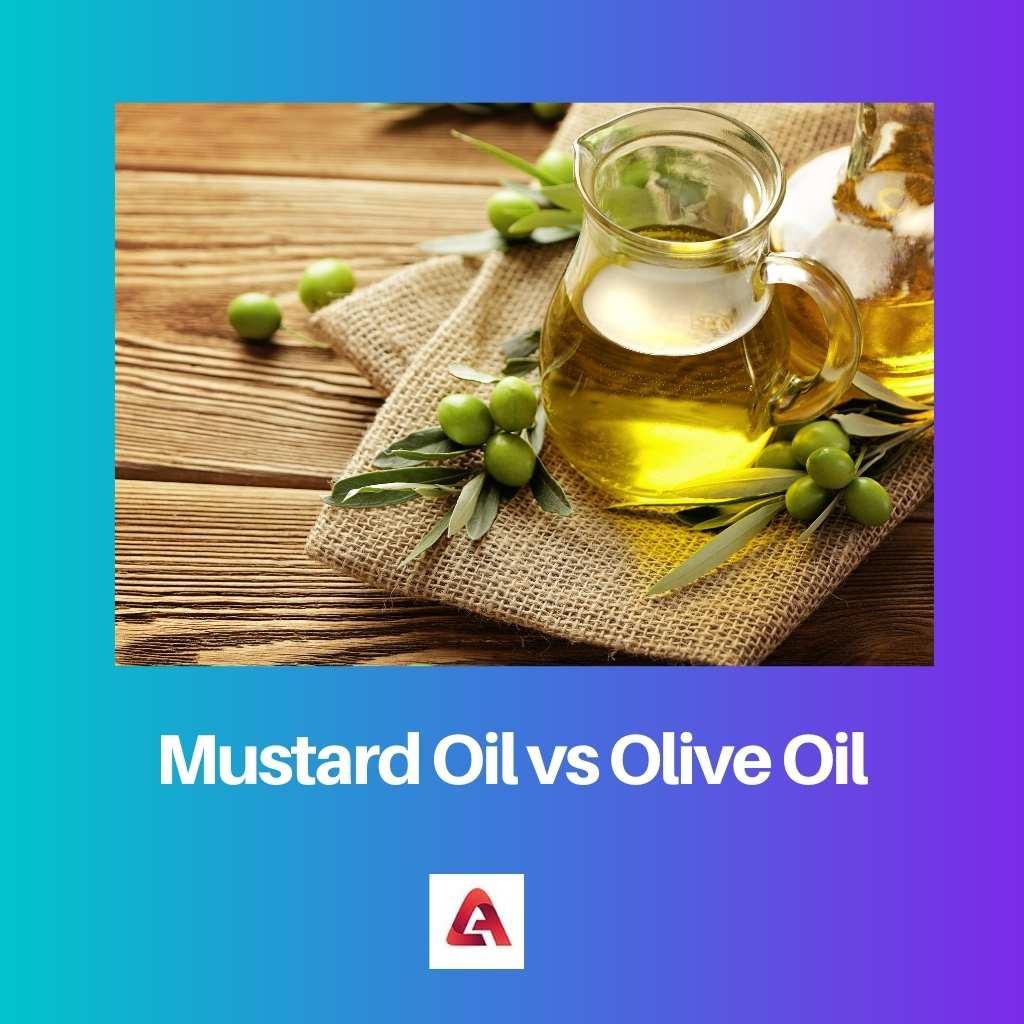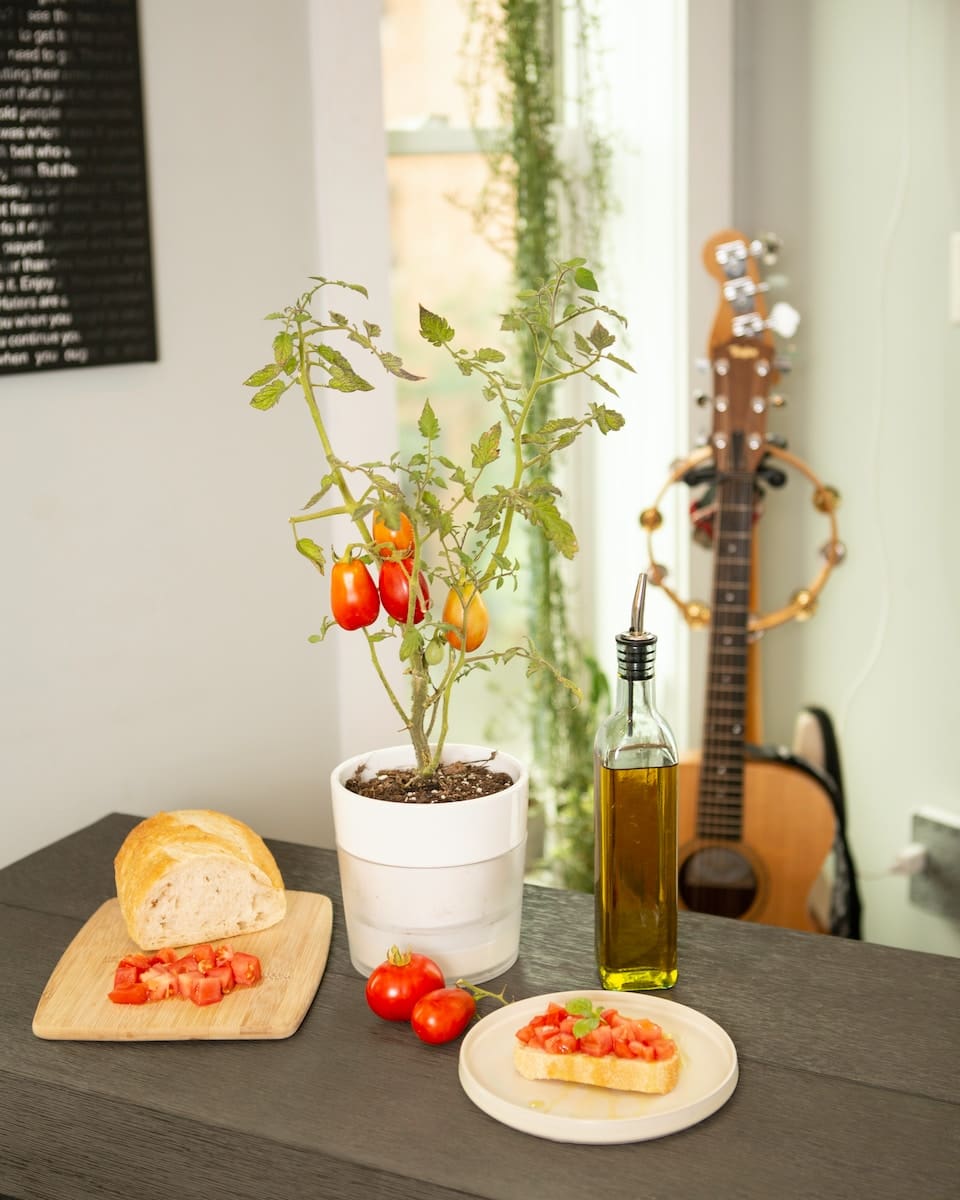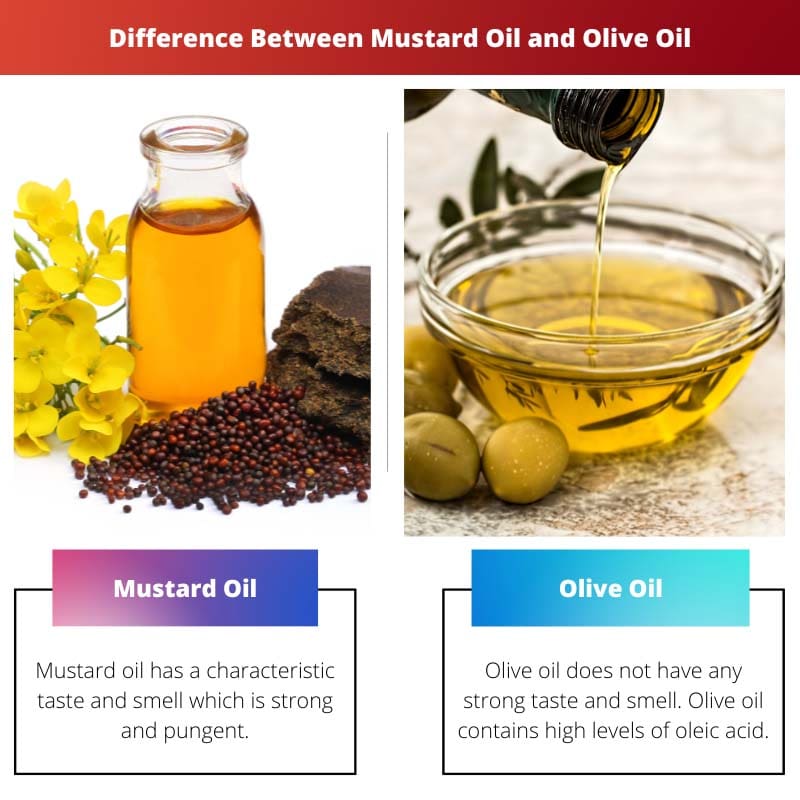Oils are crucial for the diet of a healthy body. They are a rich source of energy in the body and assist in the overall development of a growing body.
Various types of oils are consumed and available in the market. The two most common types of oil are mustard oil and olive oil.
Key Takeaways
- Mustard oil is extracted from mustard seeds, while olive oil is extracted from olives.
- Mustard oil has an intense flavor and aroma, while olive oil has a mild and fruity flavor.
- Mustard oil is a good source of omega-3 and omega-6 fatty acids, while olive oil is a good source of monounsaturated fats.
Mustard Oil vs Olive Oil
Mustard oil is a type of oil derived from the seeds of mustard plants. It is used in Indian and Bengali cuisine as a cooking oil and as a flavor enhancer. It also has a pungent flavor. Olive oil, is a type of oil extracted from the fruit of olive trees. It is widely used in Mediterranean cuisine.

Mustard oil has a characteristic taste and smell which is strong and pungent. Mustard oil contains high levels of erucic acid.
The grades in which mustard oil is primarily available in the market are Grade 1 mustard oil which is the Kachchi Ghani variant and Grade 2 mustard oil which is the non-edible variant of the oil.
While olive oil does not have any strong taste and smell. Olive oil contains high levels of oleic acid. The grades in which olive oil is available in the market are refined oil, olive pomace oil, extra virgin oil, and virgin olive oil.
Comparison Table
| Parameters of Comparison | Mustard Oil | Olive Oil |
|---|---|---|
| Saturated fats content | 11.58 grams | 14 grams |
| Unsaturated fats content | 59.182 grams | 73 grams |
| Shelf life | 9 to 12 months | 20 to 36 months |
| Price point | Comparatively lower | Higher |
| Application | Cooking, frying, massaging, on skin and hair, to reduce inflammation and other religious purposes | Cooking, salad dressing, cosmetic, pharmaceutical domain, and as fuel in oil lamps |
What is Mustard Oil?
Mustard oil is available in two forms, that is, the pressed oil which is extensively used in cooking, and the other one is essential oil which is pungent and is also termed the volatile oil of mustard.
The extraction of the essential oil is obtained from mustard seed grinding and distillation of the grounds. The dry distillation method of seed is also used for the extraction of volatile oil.
Cooking with pressed mustard oil is renowned in some cuisines and cultures. Countries like Bangladesh, Pakistan, India, and Nepal extensively use mustard oil.
Indian states like Manipur, Bengal, Assam, Odisha, Meghalaya, and others have been using mustard oil traditionally. However, the oil has restricted sales because of the levels of high erucic acid found in the mustard oil.
There are some variants of mustard seed that produce soil with low erucic acid.
Mustard oil has a distinctive and unique pungent test which is the characteristic of the mustard family. The pungent flavor is mainly due to the presence of allyl isothiocyanate.
The oil contains about 60% monounsaturated fatty acids, around 21% of polyunsaturated fats and the rest is all saturated fats.
The smoke point of mustard oil is 249 °C. Due to the thick consistency and rich source of vitamin E, the oil is also used as a natural cleanser and sunscreen on the skin.
The USDA claims that 100 grams of the oil can contain food energy of around 884 calories and can provide 100% fat. The composition of this fat is 59% monounsaturated fat, 12% saturated fat and the rest sums up the polyunsaturated fat.

What is Olive Oil?
Olive oil is a pressed oil produced from whole olives as a liquid fat. Olive oil is the primary factor in Mediterranean cuisine. The smoke point of refined olive oil is 120°C.
The specific gravity of the oil at 68 °F is 0.911 and the viscosity at the same level is 84 cP. The saponification value of the oil as virgin and refined is around 184 to 196.
Olive oil has wide applications. It is used for frying, cooking, and even in salad dressing. The oil also has extensive use in the cosmetic and pharmaceutical industries. Some traditional oil lamps use olive oil as fuel.
Olive oil has more than 85% of unsaturated fat in the form of monounsaturated and polyunsaturated fats. The monounsaturated fats are Oleic acid and Palmitoleic acid, and polyunsaturated fats are Linoleic acid and alpha-Linolenic acid.
The food energy obtained in 100 grams of olive oil is 3700 kJ. The melting point of the oil is -6 °C while the boiling point is around 299 °C. Half of the global production of olive oil is done by Spain.
The other important producers of olive oil are Greece, Portugal, Turkey, Italy, and Tunisia. The highest per capita consumption of olive oil is in Greece, and the rank is followed by Italy.
Olive oil primarily consists of oleic acid which is around 83%. However, the composition of the oil is variable depending upon the time of harvest, cultivar, the extraction process, and altitude.
The characteristic of the taste of olive oil depends mainly on the stage of ripeness when the fruit was collected.

Main Differences Between Mustard Oil and Olive Oil
- Mustard oil has a strong smell while olive oil does not have any significant smell.
- Mustard oil has a higher content of Omega fatty acids which is around 21% while olive oil has a lower content of Omega fatty acids which is around 9%.
- Mustard oil does not contain vitamins like sodium, potassium, and iron while olive oil contains vitamins like sodium, potassium, and iron in quantities of 2 mg, 1 mg, and 0.5 mg respectively.
- Mustard oil contains 34 mg of Vitamin E and 5.4 mcg of vitamin K while olive oil contains 14 mg of Vitamin E and 62 mcg of vitamin K.
- Mustard oil has a characteristic pungent flavor while olive oil has a mild flavor and taste.

- https://www.sciencedirect.com/science/article/pii/S1319562X18300883
- https://www.pubs.thesciencein.org/journal/index.php/cbl/article/view/309




